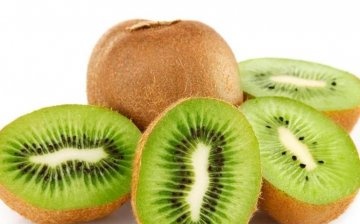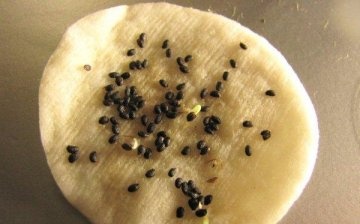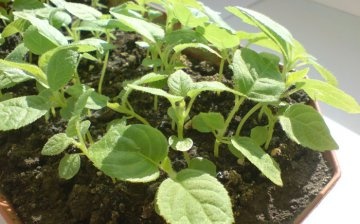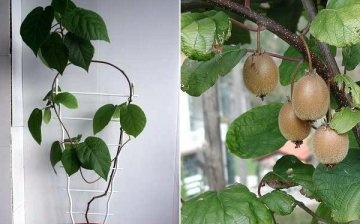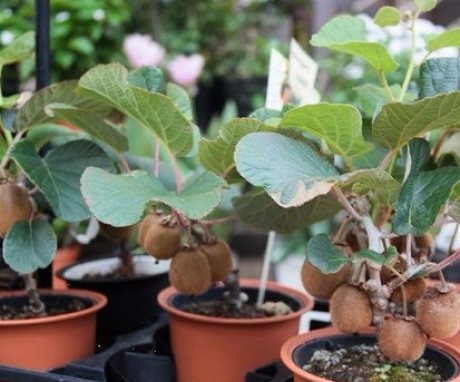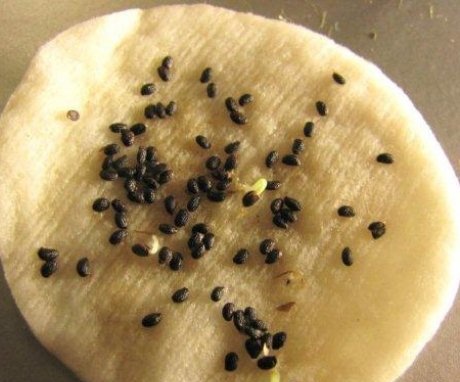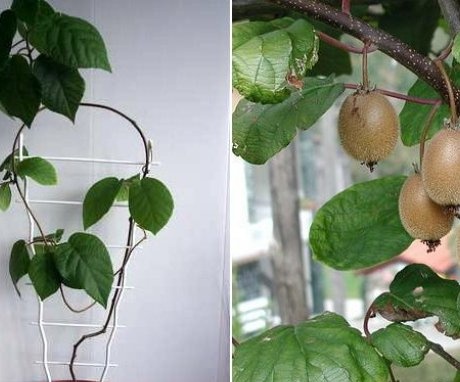Kiwi from seeds: the secrets of growing on a windowsill
Indoor plant lovers can decorate the windowsill in the house not only with the usual decorative crops, but also with fruiting exotic: citrus fruits, vines, etc. One of the types of tropical plants that you can try to grow on the windowsill is kiwi. Its second name is Chinese gooseberry, it is a thermophilic vine, which can create quite suitable conditions for growth. How to grow kiwi from seeds with your own hands?
Content:
- Features of growing kiwi
- Germinating kiwi seeds at home
- Growing kiwi: basic rules
- Important conditions for a good harvest
Features of growing kiwi
Kiwi is a dioecious plant, so if you want to get fruit, you need at least two plants - a male and a female. They will not begin to bear fruit soon: usually kiwi blooms only in the sixth year after germination of seeds.
It is possible to determine whether this plant is male or female only after flowering, so it is advisable to plant several vines for optimal results. As a seed, you can take seeds from ordinary ripe fruits, which are now sold in stores in any city.
Any varieties are suitable for growing at home, so seeds can be taken from both "fluffy" and "bald" fruits.
Kiwi is one of the distant relatives of grapes, and they need approximately the same conditions: plants need a lot of light and heat, so it is better to place them on a windowsill in the southern part of a house or apartment.
The best time to germinate seeds is early spring. The germination of seeds depends on this, so it is better not to delay planting. In nature, kiwi grows in an area with a long warm summer, and the task of a home gardener is to create the most comfortable conditions for him.
Germinating kiwi seeds at home
To obtain planting material, you must:
- Take half of a ripe kiwi fruit, you need to extract about 20 seeds from it. They must be completely freed from the pulp, otherwise the seeds in the ground may begin to rot.
- For washing, the seeds are placed in gauze and washed with running water. It is advisable to rinse several times in order to remove the pulp as much as possible.
- Clean seeds are spread on a saucer and dried for several hours.
- Next, you need to germinate them, for this you need to do the following:
- A cotton wool is placed in a saucer, which must be moistened with hot water, seeds must be laid out on it. At the same time, there should not be a lot of water, it should only soak the cotton wool well.
The saucer should be placed in a sunny location and covered with foil to create a mini greenhouse, protected from drafts. At night, the film is removed, and in the morning it is necessary to wet the cotton wool again and return the film to its place. The first sprouts of kiwi seeds will give out in about a week.
As long as thin white roots appear, the plants need to be transplanted into the ground.
The best soil mixture will be peat, humus, sand and turf in equal proportions. The seeds should be placed in small individual pots, placed on the surface of the soil and sprinkled with a thin layer of earth. It does not need to be tamped, otherwise it will be difficult for the plant to break through to the surface. Priming it is necessary to spray every dayto keep it constantly hydrated. Additional protection from drying out can be provided by installing a mini greenhouse from a cut plastic bottle over the pots of soil.
Growing kiwi: basic rules
Re-transplanting into larger containers is carried out when the plant has several pairs of true leaves, while the soil should contain less peat and more turf. When growing young plants, it is important to create conditions for them as close as possible to natural, then it will be possible to achieve healthy rapid growth.
Basic requirements for kiwi:
- The earthen coma must not be allowed to dry out, therefore uniform watering must be ensured. In order not to damage the plants and to ensure constant moisture throughout the entire surface of the earth, it is better to use a sprinkler rather than a regular watering can. You can calculate the exact number of times you press the spray gun in advance so that the amount of water is the same every time you water.
- Kiwi requires long daylight hours, so the pots should be placed on southern windowsills. If there is not enough natural light, daylight hours can be extended using a fluorescent lamp. Winter lighting is best placed horizontally.
- Organic compounds are used as top dressing: you need biohumus, or you can use compost. Normally, organic fertilizing should be carried out once a year if nutrient soil is used for planting. In order for the plant to constantly receive nutrients, a trench can be dug around the grown sprout, after which fertilizers are laid in it. During watering, they will gradually flow to the roots, ensuring healthy growth.
- In addition, in the summer, the plant is provided with a complex mineral fertilizer: it will need feeding approximately once a week or once every 10 days.
- In order for the vine to be strong, it is necessary to periodically pinch the top: this stimulates the appearance of lateral processes.
- Kiwi has wide leaves, so each plant requires a separate pot so they don't block out the sunlight. The sprouts stretch out rather quickly, usually re-transplant carried out already 4 weeks after the appearance of the first leaves.
Important conditions for a good harvest
Liana needs proper placement. It takes up quite a lot of space, so an insulated balcony will be the best place to grow it. It is necessary to organize a support for it, along which the vine can climb up, it can be made with a frame for a balcony window so that it looks beautiful. The total length of each vine can be up to 7 meters.
To obtain fruits, flowers must be pollinated: in nature, this work is done by bees and bumblebees; in greenhouse and indoor conditions, the owner must take care of pollination.
If it turns out that there are too many male plants, buds from female plants can be grafted onto them to get fruits. To get a good harvest, you will need 1 male plant for 5-6 female plants, so if the ratio is wrong, it is better to transplant "eyes". They take root quite well, so the method will increase yields.
It is necessary to constantly inspect the leaves in order to:
- In time to identify the appearance of the fungus and take measures to clean the leaf blades.
- Kiwi can become infected with pests from other indoor plants, so inspections should be carried out as often as possible, and if possible, keep the plants away from other indoor crops.
- In autumn, it is advisable to remove old shoots: if the branches of the creeper have already borne fruit, it is better to remove them. This will make room for new shoots, and the vine will not grow old: this will allow it to bear fruit for many years.
If kiwi is grown on a veranda or on an uninsulated balcony, in winter you need to take care of protecting the vines from the cold. After pruning shoots are removed from the trellises, they need to be wrapped so that they can calmly survive the cold period. In the spring, after waking up, they will actively give young shoots.
Growing kiwi on your own is not as difficult as it might seem. Chinese gooseberries are not a very whimsical culture, and it is quite possible to create suitable conditions for it at home. This will surprise guests with delicious fruits, which for many are still exotic overseas.
More information about planting kiwi seedlings can be found in the video.



